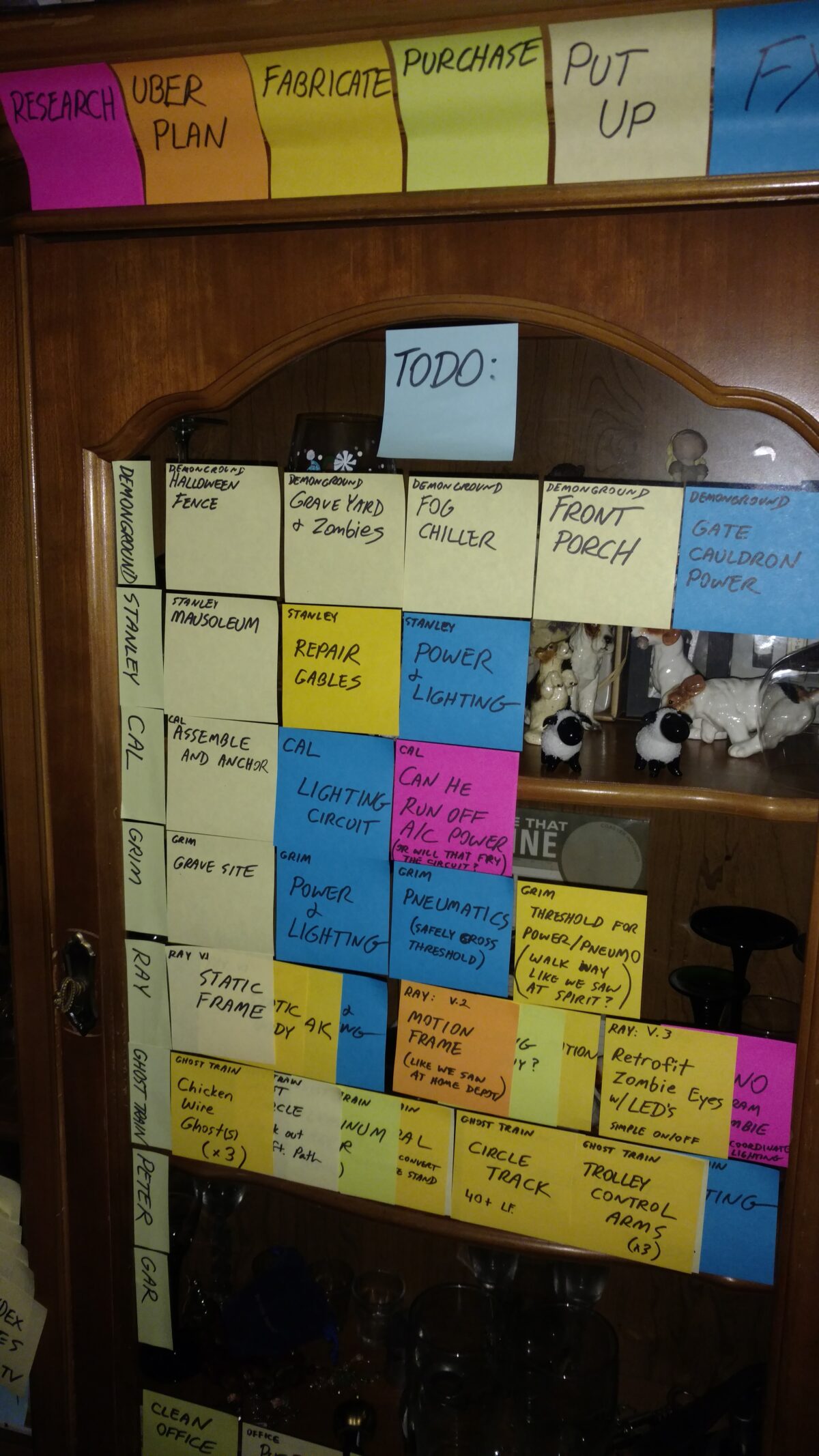Continue reading “The High-Wire Safety Net”Coach: “I’m concerned about the quality of delivery. The defect counts seem very high.”
Manager: “That’s why we have testers. To root out the defects.”
Coach: “I understand the value your testers are bringing. I’m referring to the frequency with which they bring it.”
Manager: “What difference does it make? The bugs are getting addressed.”
Coach: “The difference? It’s one thing to HAVE a safety net. It’s another thing to USE it.”
Real-Life Conversation
Category: Metaphor
Agile Procrastination
Hi, I’m Mike and I’m a procrastinator. Not only am I a procrastinator, but I am also pretty darn good at it. I’ll bet you are too. If you doubt that statement, I invite you to spend 18 minutes watching Tim Urban speak on the subject:
Tim Urban: Inside the mind of a master procrastinator | TED Talk
Agile Estimation Primer – Part 2
Our step-by-step guide to applying the concept of relative sizing to estimation continues. In this section we’ll build backlogs at various levels of detail – from high level product road maps, through release planning, and onward with increasing levels of precision all the way down to detailed iteration planning…
If you haven’t read Part 1 yet, please go back and make sure you understand the relative sizing concepts introduced there.
Continue reading “Agile Estimation Primer – Part 2”Agile Estimation Primer – Part 1
A step-by-step guide to understanding how to apply the concept of relative sizing to estimation, and then using that understanding to build backlogs at various levels of detail – from high level product road maps, through release planning, and onward with increasing levels of precision all the way down to detailed iteration planning…
Tens, Romans & Lettermen – Part 2
Far be it from me to leave well enough alone. Let’s amp this discussion up to the next level. **
Part 2 – Advancing the Discussion
In Part 1 of this topic, we demonstrated why multi-tasking is bad for productivity. Some of you will be just fine with that conclusion. You probably are perfectly comfortable waiting for all three columns of the grid to be generated in sequence, and then just accepting the end result.
But what if there was a reason not to be so comfortable with that result? If that were the case, this discussion could get pretty interesting.
Note: If you haven’t read Part 1 yet, you should go back and do that first.
Continue reading “Tens, Romans & Lettermen – Part 2”Tens, Romans & Lettermen – Part 1
A simple game to illustrate the cost of task-switching *
The title of this post is a terrible play on words. Every time I think about it, I’m reminded of the opening lines of Mark Antony’s funeral oration. It’s cool if you don’t agree with the title. Lend me your ears anyway…
Multi-tasking via Task-Switching is a costly practice. This game can be used to illustrate this point with things you can probably find readily available in your desk or office-supply closet. The material is presented in 2 parts. Part 1 reveals the exercise in its most basic form. Part 2 expands on the original premise to learn even more…
Continue reading “Tens, Romans & Lettermen – Part 1”User Story Mapping a Backlog
“We’ll start our discussion of Scrum by showing you this Scrum flow diagram. You can see here on the left side of the diagram is this thing we’ll call the Product Backlog. The Product Backlog is a prioritized list of everything our team could possibly do and it’s maintained the Product Owner. But let’s not get into that right now…”
Every Scrum Trainer, ever
Having a Ball – Introduction
There is a simulation I build into my Agile training curriculum. It is based on a very old game that has been used for ages. I’m not the inventor of the game, but I am a very strong adapter of it. Here I examine the core game followed by variations I have used…
If I Had a Tractor – Introduction
Here the metaphor of lawn care serves as a gateway into a discussion of defining and estimating work in a manner similar to what new agile teams are first called upon to learn. We then build on those concepts to demonstrate the rationale for maintaining cross-functional teams. And finally how to budget for these activities.
When things get hard…
“We practice when things are easy so we can use it when they get hard.”
The phone in the dining room rang, the caller id showed my parent’s number. My wife looked at the phone, then up at the clock, then at me. Somehow, we instinctively knew what was coming. I pushed the speakerphone button, and I heard my mother’s voice, quiet and wracked with grief. “I’m all alone.” Continue reading “When things get hard…”









